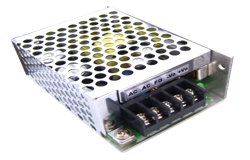Oor wat is dc-dc converter
Wat is 'n DC-DC omsetter?
'n GS-GS-omsetter is 'n toestel wat gelykstroom (GS) van een spanningsvlak na 'n ander omskakel. Die insetspanning is tipies óf 'n battery óf 'n kragbron, en die uitsetspanning word gebruik om 'n stroombaan of toestel aan te dryf. Daar is baie verskillende soorte GS-GS-omsetters, elk met sy eie voordele en nadele. Sommige algemene tipes is buck-omsetters, hupstoot-omsetters en bok-hupstoot-omsetters.
Hoe werk 'n GS-GS-omsetter?
'n GS-GS-omsetter is 'n toestel wat 'n insetspanning neem en dit omskakel na 'n ander uitsetspanning. Dit kan gebruik word om toestelle aan te dryf wat 'n ander spanning benodig as wat van die kragtoevoer beskikbaar is.
GS-GS-omsetters kan óf lineêr óf skakelend wees. 'n Lineêre omsetter gebruik 'n reeks weerstande en kapasitors om die uitsetspanning te skep, terwyl 'n skakelomsetter transistors gebruik om 'n gepulseerde uitsetspanning te skep.
GS-GS-omsetters is gewoonlik klein en kan maklik by 'n stroombaan gevoeg word. Hulle is ook doeltreffend, wat beteken dat hulle 'n groot persentasie van die insetkrag na die uitsetspanning kan omskakel.
Wat is die voordele van die gebruik van 'n GS-GS-omsetter?
'n DC-DC-omskakelaar kan 'n aantal voordele vir jou elektroniese projekte bied. Een van die belangrikste voordele is dat dit kan help om die spanningsuitset te stabiliseer, wat veral belangrik kan wees wanneer sensitiewe elektroniese toerusting gebruik word. Boonop kan 'n GS-GS-omsetter help om die doeltreffendheid van jou projek te verbeter, wat kan lei tot langer batterylewe of langer werkstye. Laastens kan 'n GS-GS-omsetter ook help om die algehele gewig en grootte van jou projek te verminder.







































